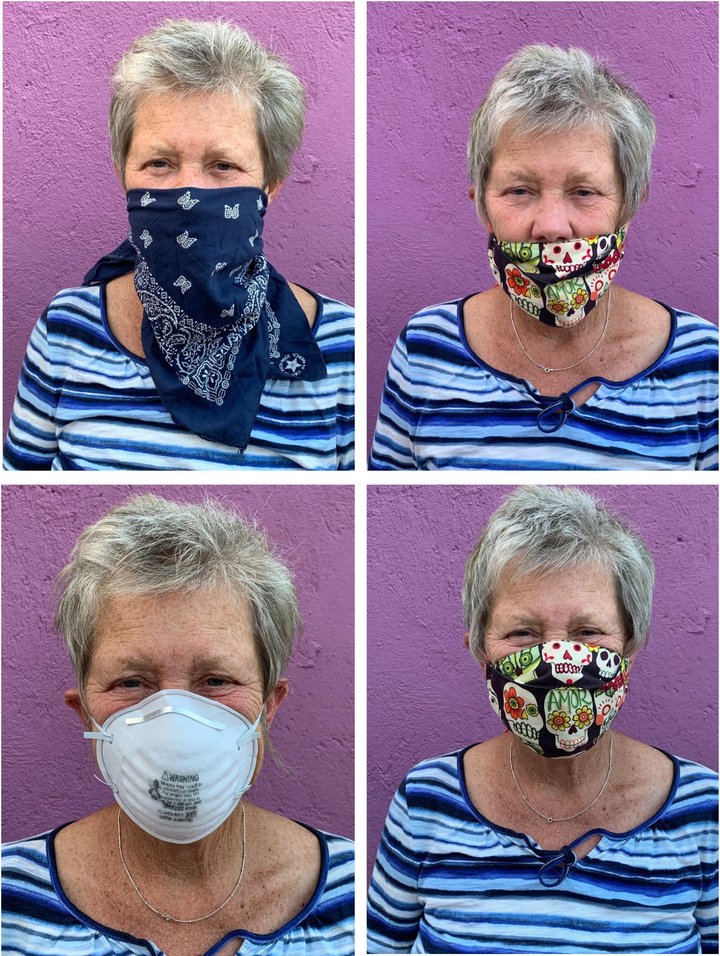It feels bizarre to be writing about face masks nearly a year into the pandemic, but there’s plenty of evidence that not everyone takes masks seriously. With nearly 14 million cases and 270,000 deaths from Covid19 in the US alone, I’m still reading and hearing about people unwilling to wear masks in social situations, especially indoors and where it’s hard to maintain that nominal six feet spacing. As I understand it, the anti-maskers claim there’s no evidence that masks slow down the spread of the virus, while personal freedom trumps any other considerations.
When we talk about “evidence,” the truth is, it’s virtually impossible to come up with iron-clad proof that masks work. For instance, consider the ethics involved in getting 20,000 people to wear masks for a month while asking another 20,000 go without, subsequently reviewing the results in terms of who got infected. (Although, with a limited number of masks available in the whole country, a Danish researcher in Guinea-Bissau is attempting to do just that type of randomized trial.)
So we’re left with post hoc observational and epidemiological studies, such as the following:
- The well-publicized case of the two asymptomatic hair stylists in Missouri who infected their household members, but not any of the 67 clients of theirs who were subsequently tested. They both wore a double-layered cotton face covering or surgical mask while working.
- An outbreak aboard the USS Theodore Roosevelt—a particularly bad environment for “social distancing”—where researchers estimated that the use of face coverings reduced the risk of infection by 70%.
- Mongolia, where facemasks have been in general use since January, has experienced zero Covid deaths to date (November 30).
- In Thailand, contact-tracing investigators found a 70% reduced risk in people who reported that they always wore a mask in high-risk exposures.
And on and on. You can find details of these and many more circumstantial examples of evidence here. And here’s the latest from the CDC.
Then there’s laboratory evidence. The tiny virus (about 0.1 micron diameter, compared, say, with human hair, about 80 microns) can’t normally exit our bodies on its own, so a mask doesn’t need to filter down to that size. Instead the virus particles hitch a ride on either fine aerosols (typically 6-20 microns) or droplets (larger than 20 microns). Not only do cloth masks block almost all large droplets, but also most aerosol particles don’t get through. Watch this four-minute video for a convincing demonstration. One study in The Lancet estimates that surgical and comparable cloth masks are 67% effective.
As I’ve written before, wearing a mask both protects you, the wearer, and those around you. No mask is 100% effective, of course. On the other hand, your mask:
- Reduces your own vulnerability to the virus when in risky situations (especially indoors, around other people who aren’t wearing a mask).
- Reduces your viral load (the number of virus particles you inhale) when you are in a virus-laden environment. There’s increasing evidence that the lower the dose, the milder the infection — and less chance you’ll end up in ICU with a ventilator down your throat.
- Reduces the chance that you’re infecting others around you, remembering that some 50% of us won’t know when we’re infected.

Clockwise from top left: Bandana: not recommended — too much air gets in and out unfiltered, plus coarse weave; Under nose: Doesn’t cut it, the virus loves hanging out in your nasal passages, which is why swabs are taken from there; 3-layer cloth mask covering mouth and nose: pretty effective, comfortable for long periods; N95 mask: best of all—tight fitting, high level of filtration. (Again, no mask gives 100% protection.)
If none of the above convinces you, can you anyway just accept that the potential benefits of wearing a mask far outweigh any possible downsides? Please: wear a fucking mask!
Postscript: I was happy to see that, finally, YouTube has banned One America News Network (OANN) from posting fake “COVID-19 Cure” videos. AND they’ve removed Colleen (Kelley) Victory M.D.’s videos—she’s a non-practicing doctor (since 2008), not an infectious disease expert—who downplays the seriousness of Covid, including claiming that wearing a mask does more harm than good. Details here.
CLICK TO MANAGE